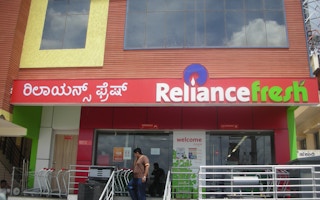A qualitative change took place in Indian agriculture in the 1970s: the government then had announced that the country had achieved domestic food self-sufficiency, and also that India had a surplus of food for export.
Fifty years on, this idea of achieving a food surplus remains elusive for India, especially since the extreme poor, both in urban and rural areas, have no purchasing power to buy enough food to meet their needs. The government narrative, however, sparked the rise of agribusiness corporations, whose dominance now still threatens India’s traditional variety of trading networks, food markets and small family farms.
The ‘imagined surplus’ gave birth to a new class of large-scale traders who networked with global agri-business corporations to export food. Growth has been so substantial for the food export sector, that India has since become the world’s leading rice exporter, with exports valued at US$7.1 billion in 2019-20.
The neoliberal policy paradigm introduced in India in July 1991 was also instrumental in boosting food export businesses. It contributed to accelerating the diversification of large corporate houses into procuring, transporting, storing, processing and distributing food.
Three farm laws introduced by the government in June 2020 represented the interests of the global agribusiness corporations aligned with Indian corporations that had diversified into agribusiness.
The most dramatic of the three laws, The Essential Commodities (Amendment) Act 2020, removed all limits on the storage of food that had been introduced in the 1955 version of the Act. The 1955 Act had made hoarding of ‘essential’ commodities (cereals and sugar) legally punishable, but the amended Act invited large-scale speculative hoarding of food.
The farmers’ movement, which arose out of farmers’ fear that their livelihoods and ecological sustainability would be taken over by large agribusiness corporations, forced the government to repeal the three laws in November 2021.
Though the farmers’ movement succeeded, at least temporarily, in resisting the monopolisation of the food trade by agribusiness interests, the trend towards monopoly control of agrifood chains that has been going on for a few decades has not been reversed.
The infrastructure that has been built over the years for this monopoly control remains intact and is expanding. Since the mid-2000s, subsidiaries of major Indian industrial conglomerates have entered the fresh-food supply chain: Reliance Fresh, Adani Agri Fresh, Bharti’s Field Fresh and others.
In parallel, Adani Agri Logistics has built and operated grain silos for the central government’s Food Corporation of India (FCI) in an ongoing public–private partnership. The latter activity has accelerated since 2017, with new private railway lines, automated grain-processing plants and other infrastructure built around these outsourced FCI silos in Punjab and Haryana (the two major food-producing states) as part of a wider process of capturing logistical chains.
The public sector, at central and state levels, has been subsidising corporate expansion. The state has facilitated the creation of a private security force by the Adani Group to protect its infrastructure of private railway lines, silos and grain-processing plants.
Nearly 900 Adani-controlled silos have been set up all over India to facilitate grain storage and interstate as well as international food trade.
A new threat, potentially even greater than the monopolisation of grain storage, to small-scale and family farming is now emerging from high-tech agribusiness corporations that aim to digitise all agricultural activities to create a business in big data. For these corporations, the potential for data mining is huge.
Agricultural research data in India is currently split across multiple state and central institutions. Corporations are proposing applications that aim at getting real-time information on soil, weather, pests and other factors to farmers, who will likely be required to provide data to the service providers in order to access the platforms. Futures trading will also require datasets of price information. There are now moves to create a nationwide ‘AgriStack’ database to enable rapid data modelling, so that there is no need to spend disproportionate time and effort on data collection.
With digitalisation, automation can be facilitated through the introduction of drones, sensors and robots, though this will displace human labour. The food sovereignty of small and family members in India could be wiped out by larger, high-tech farms. Agribusiness corporations that produce food through such farms will contribute further the consolidation of food storage.
The growing evidence of collaboration of domestic agribusinesses such as Adani and Ambani with international agribusiness entities such as Cargill is an indication of the growing scale of consolidated monopoly power in agrifood chains.
The enormous power of such large corporations increases income vulnerability for small farmers and food insecurity for rural and urban consumers. To challenge this power, Indian farmers and rural workers will have to go further than what they did in 2021, when they struggled and protested against the farm laws. This time, they will have to build stronger solidarity networks with the urban workers and consumers.
Pritam Singh is Professor Emeritus at the Oxford Brookes Business School in Oxford, United Kingdom.
Originally published under Creative Commons by 360info™.











